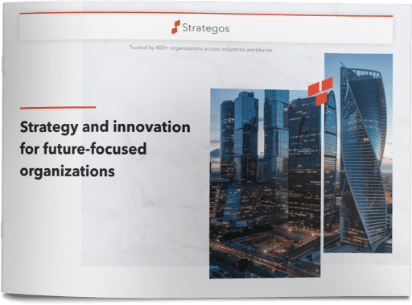How leading companies accelerate learning
When innovating the “next big thing” is top priority, nearly a quarter of large U.S. companies now rely on in-house product or corporate venture incubation to lead the way, according to a recently published survey. In addition to creating a startup-like aura that attracts the best and brightest employees, the incubators offer a failsafe environment where intrapreneurs feel free to explore innovations that might at first seem too exotic vis à vis the core business. They also are insulated, initially at least, from the pressures of committed launch dates.
Managing such programs effectively, though, often challenges even experienced innovation leaders. They discover that best practices in new product development (NPD) fail to ensure the success of corporate incubators. Those approaches emphasize operational and capital efficiency (admittedly core requirements at big organizations), but as I recently wrote in “ParisTech Review”, they do little to grow intelligence, the life-blood of intrapreneurial activity.
Over the past 30+ years, NPD consultants and in-house experts have largely focused on how to:
- Accelerate time-to-market by streamlining cross-functional process efficiency
- Reduce execution risk by strengthening project management and roadmaps
- Provide diversification by using product platforms and portfolios
- Boost market readiness by improving customer research and testing
When companies target known markets and risks are skewed towards execution, applying these practices delivers measureable improvements. But when companies target unfamiliar terrain, possibly trying to expand into adjacent markets (think Nike Digital Sport) or create new ones (think Google Glass), the culminating step in their incubation process is often best described as launch-and-pray. Lessons about overlooked customer requirements, needed improvements in product design and performance, or faulty assumptions about the optimal go-to-market strategy are learned only slowly, with costly consequences for revenue ramp, gross margins, market share, and customer satisfaction.
Successful corporate incubators, funded to pursue projects laden with more market risk than the company’s NPD approach is designed to address, foster a playful and collaborative artisanal environment where teams grow intelligence of three kinds; They perfect tools and their dexterity in the use of those tools (technical intelligence), mobilize and engage other innovators and stakeholders (social intelligence), and acquire market intelligence, the ultimate arbiter of success.
The Learning Loop in Venture Incubation
Source: Amiel Mark Kornel
These companies are investing in one or more of three complementary assets to spin the learning loop faster: incubation ecosystems, incubation catalysts and incubation platforms. Some initiatives are purely homegrown, others are developed and managed in partnership with innovation solution providers and consultancies, and yet others are licensed entirely from 3rd parties.
Incubation ecosystems
Over the past decade, corporate incubators have begun to experiment with open innovation contests to crowdsource ideas and solve problems, and with so-called hackathons to foster collaboration and rapidly prototype solutions. They introduce more diverse perspectives and “out-of-the-box” thinking by mobilizing an ecosystem of contributors from both inside and outside the corporation. And just as importantly, they create a playful, fail-safe environment for innovation.
Philips launched its Digital Acceleration Lab in 2012 in Eindhoven, Netherlands. Scientists from across 35 disciplines (e.g. IT hardware, software, firmware, user experience design, anthropology, industrial design, data visualization) collaborate on new products that can be quickly tested. The so-called rapid co-creation model involves business functions from the start in defining hypothetical value propositions and use cases for future products. The information-technology team then helps quickly prototype new digital products. According to Perry Nouwens, IT leader of the accelerator, cross-disciplinary hackathons spanning from idea to prototype can be finished in as little as 5 days.
Mastercard Labs, the credit-card firm’s incubator, also uses a hackathon, called Innovation Express, to assemble teams ad hoc and help them deliver a prototype, preliminary business plan, and video story within 48 hours.
Kraft’s Collaboration Kitchen crowdsources external innovations that can assist internal NPD teams, e.g. a lab test apparatus that simulates the mechanics of a consumer opening a package, as well as new chemical compounds and even recipes. It is hosted by open innovation portal Ninesigma; software firm BrightIdeas manages creative briefs and respondent submissions.
At Starbucks, international consumer panels, recruited and managed on-line, are used to quickly market test a new product concept or prototype. Several crowdsourcing intermediaries like Usamp.com and AYTM.com (Ask Your Target Market), facilitate this kind of on-line market testing with for-fee services.
Other companies are experimenting with quick-and-dirty market testing through crowdfunding sites like Kickstarter and Indiegogo. Last year, Warner Brothers tested the appeal of a new movie idea with a Kickstarter campaign. They figured that dollars invested (reportedly more than $2M on the first day) served as a good proxy for consumer votes in favor of the movie.
Incubation catalysts
Some bold incubators embed external contributors on their teams as catalysts to accelerate learning. These sources of constructive disruption typically are entrepreneurs or investors who bring diverse and fresh perspectives.
Insiders rarely can provide this boost. According to a 2010 Nielsen study of 30 global consumer-goods firms, incubation programs located at corporate headquarters reported fewer breakthrough innovations – less than half the rate –than companies whose incubators were kept at arms-length and fewer than even those companies with no incubators at all. Apparently, even well intentioned senior managers of the core business unintentionally inhibit blue-sky innovation.
Corporate executives just can’t inspire and challenge in-house innovators as much as entrepreneurs with first-hand experience in exploring new markets. An increasingly favored recruiting practice in Silicon Valley at companies like Yahoo and Google is the so-called “acqui-hire”, in which a startup is bought primarily for its team, more than for its technology, products or market access. Only rarely, however, do the founders or CEOs stay longer than a few months at the new parent company. As a result, the acquisition is often less impactful than hoped.
A less costly route favored by companies like Disney and Sprint is to hire consultancies staffed by former entrepreneurs to help design incubation programs and even shepherd projects. Frost Data Capital has an innovative model in which its team, all experienced entrepreneurs, takes an active day-to-day role in ideating and incubating startups in partnership with clients like General Electric. The Academy for Corporate Entrepreneurship created by Founders’ Institute, one of the largest and oldest for-profit startup incubators in the U.S., and Techstars are two other such specialized service providers with large networks of on-call mentors.
Kuoni, the Swiss travel services company, tested a more radical approach when they hired the young crowdsourcing consultancy OneLeap. U.K.-based OneLeap manages an international network of about 3000 entrepreneurs, from which it assembles SWAT teams who advise and sometimes contribute to corporate innovation projects for OneLeap clients.
Incubation platforms
Specialized tools and techniques tuned to the company’s innovation context should form the infrastructure of a corporate venture incubator. Repeated use of this platform to conceive, craft and test prototypes will progressively improve the intrapreneurs’ innovation “dexterity” thanks to what NYU professor and author Richard Sennett calls “the virtue of repeated practice” (The Craftsman, 2008).
Many tools used in corporate incubators for diverse tasks like software development, system engineering, chemical synthesis, microprocessor development and simulation, media management, and packaging design are no different from those used in traditional NPD. In addition, though, a growing cadre of vendors tout specialized tools and services that support such core incubator activities as collaborative ideation, data mining, rapid prototyping, and business modeling.
Collaborative ideation
Lilly is one of several large organizations who use the @Work solution of InnoCentive (a Strategos partner where I serve as Board Director) to source scientific and technical intelligence from across the company’s R&D labs worldwide. Innocentive recently announced a partnership with Denmark-based NOSCO to bolster idea management so that its customers can mobilize more collaborators and end-users faster. Several dozen competing ventures offer idea-management solutions today.
Data mining
Boston Scientific, Colgate-Palmolive and Pratt & Whitney, among others, use Goldfire software from Invention Machine, acquired by IHS in 2012, to capture innovation insights from unstructured content – including 90 million technical and scientific documents distributed across the Web – as well as to facilitate collaboration and ideation. Its semantic search capability allows corporate intrapreneurs to mine internal and external reports, engineering schema, patents, and other content to uncover insights about market opportunities or validate hypotheses. Moodwire, a Silicon Valley startup I co-founded in 2008 (and where I serve as Chairman), has developed a social search technology specifically geared towards uncovering and measuring consumer opinions expressed through social media like Twitter and Facebook. Early customers have included leaders in the hotel industry, consumer electronics, and banking.
Rapid prototyping
U.S.-headquartered Thermos uses 3D printers from Stratasys to automatically generate prototypes of new designs. A prototype can reportedly emerge from the printer with a mixture of clear and rubberlike features suitable for liquid and gas testing. (Blue-sky innovation is alive and well at the 110-year-old company. It recently developed a version of its venerable product that is free of BPA, a chemical found in plastics that has raised health concerns and launched a joint program with iDevices to develop connected home products.) An even more radical example of the rapid prototyping revolution wrought by 3D printing is the free-standing robot launched in early 2014 by Netherlands-based Joris Laarman Lab. Popular with artists and furniture makers, it reportedly can print accurate lines of steel, stainless steel, bronze, copper and aluminum on any surface, whether a ceiling, a 90-degree angled wall, or simply a flat-bed.
Business modeling
The shift from a pure product or service design focus to a more holistic approach that defines different aspects of the business model has been adopted as standard practice by many companies. Value propositions, customer segmentation, economic models and customer journey design are now part and parcel of the innovators toolkit and often enabled by software from vendors such as Vianoveo in France, Golden Egg Check in the Netherlands and Business Model Foundry in Switzerland.
Corporate commitment
Corporate commitment to incubators (sometimes called accelerators) has waxed and waned over the years with economic and technology cycles. Despite the best intentions, results have too often fallen short of the promise. Will the latest wave also disappoint? By funding incubators buffered from the day-to-day exigencies of the core business and equipped with platforms, ecosystems, and catalysts to support learning, corporate innovation may finally benefit more predictably from the deeper intelligence of their intrapreneurial teams.





